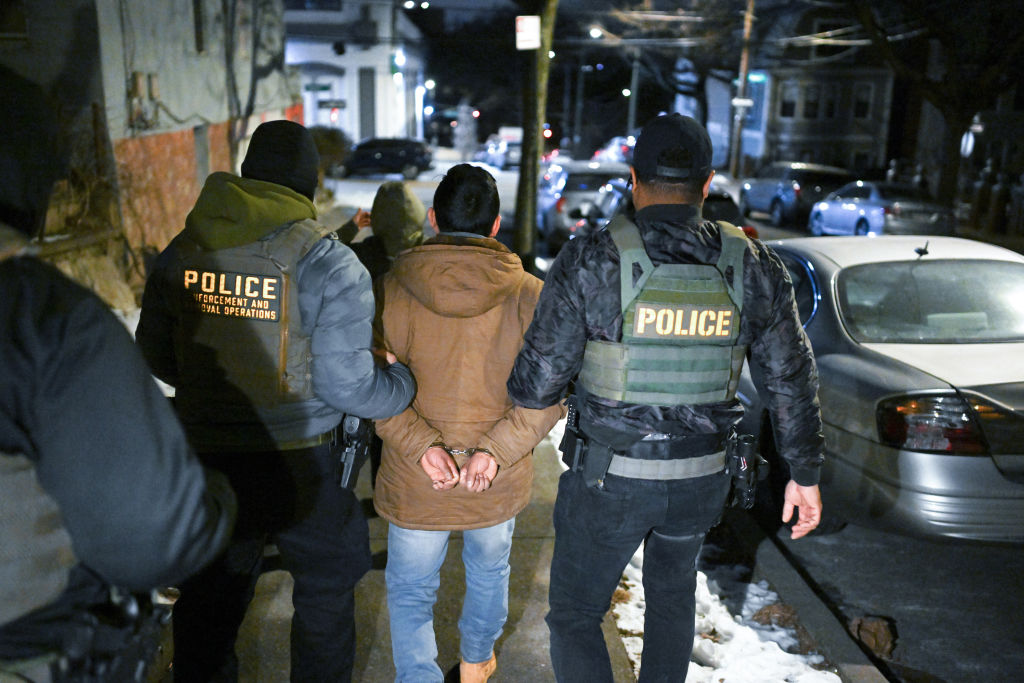The drone war in Ukraine has started a new technological arms race
Ukraine’s frontline drone operators are worried about Russia’s growing ability to counter their most popular models according to a report from The Guardian’s Dan Sabbagh.
Three Ukrainian drone operators explained to Sabbagh that their most abundant models—those made by the Chinese manufacturer DJI—were becoming less effective as a result of new Russian electronic warfare techniques being applied on the battlefield.
“They’re adept and they are manufacturing these special jamming systems,” one drone operator revealed to Sabbagh about the situation unfolding in the skies above Ukraine.
“So actually, I believe like in three, four months, DJI [drones] will not be usable,” the operator added, which is a situation that could pose a major problem for Ukraine since a large part of their fleet is composed of the drones Russia has learned to counter.
According to NPR’s Greg Myre, DJI announced in April 2022 that the company no longer planned on selling their popular commercial drones to Russia or Ukraine on the basis that they were not intended for military use, but they can still be acquired.
Ukraine is heavily reliant on donations from third-party organizations in order to field its drone fleet according to the New York Times, which also noted that advisors have estimated roughly half of Ukraine’s drone stock is made of DJI drones.
One of the operators interviewed by Sabbagh explained that the popular DJI Mavic models were once able to fly upwards of 1.8 miles but now can only fly about 150 feet, which has forced drone pilots to work far closer to the frontline and put themselves in ever-greater danger.
It isn’t just new Russian electronic warfare tactics that are making Ukraine's DJI drones less usable, though. Sabbagh noted battlefield environments like those in Bakhmut could affect a drone’s range while weather conditions posed constant problems.
Photo y Vitaly V. Kuzim, Own Work, Wiki Commons
Another major issue for Ukraine’s drone pilots has been the downing of their vehicles to friendly fire. “Nervous infantry on the ground know the presence of a drone loitering for a moment above can be a prelude to accurate incoming artillery,” Sabbagh wrote.
All of these issues have forced Ukraine to search for more advanced drones to combat what Sabbagh called a “looming battlefield problem.” Ukraine is developing its own six-rotor wing drone called the Windhover, as well as some other fixed-wing solutions.
The Leleka-100 is one Ukrainian-made option but Forbes’ David Hambling noted in a March 1st article that platforms like the Jump 20 UAS, Altius 600, and the AtlasPro—a tri-copter from Makers Atlas Aerospace—will form the basis of Ukraine’s new drone fleet.
Photo by Void Wanderer, Own Work, Wiki Commons
The AtlasPro in particular is an important addition because “it is less vulnerable to radio jamming than consumer quadcopters,” something Hambling wrote was “increasingly important as Russia increases the number of jammers at the front line.”
Like most major wars, the current conflict between Russia and Ukraine has revealed how the battlefield has changed. Drones have become a necessity for both sides not only for their reconnaissance capabilities but also because they can be used as a force multiplier.
“In the battle between Russia and Ukraine, drones are integrated into every phase of fighting, with extensive fleets, air defenses, and jamming systems on each side,” wrote the Washington Post’s Isabelle Khurshudyan, Mary Ilyushina and Kostiantyn Khudov.
“It is a war fought at a distance—the enemy is often miles away—and nothing bridges the gap more than drones, giving Russia and Ukraine the ability to see, and attack, each other without ever getting close,” The Washington Post journalists added.
Drones can be used to attack an enemy force, dropping anti-personnel munitions or in a kamikaze fashion in what could be described as a human-guided missile. They’re also extremely important for artillery spotting and directing Ukraine’s limited ammunition.
However, the transition to a new drone fleet won’t be cheap. Dan Sabbagh noted that just one Leleka-100 costs $50,000 dollars, a far cry from the hundreds to sometimes thousands for a commercial DJI model. But the race for better drones isn’t about the money.
Photo by Twitter @UAWeapons
Each side's ability to win the war is probably dependent on their drone capabilities, at least that’s what Ukraine’s Minister of Defense Oleksiy Reznikov believes according to a statement he made in late March.
"Drones are potentially a game-changer on the battlefield in the same way that precise Western MLRS became last year," Reznikov said, referring to Multiple Launch Rocket System weapons, according to a Reuters report from Max Hunder.
Hunder added that Ukraine’s government was allocating roughly $500 million dollars in 2023 for its new drone fleet as it seeks to bring its forces up to par with Russia’s.
The result of all these technological advancements on the battlefield has turned the struggle to acquire the most advanced drones into a kind of new arms race, one that could reward its winner with victory in the conflict...
More for you
Top Stories


































